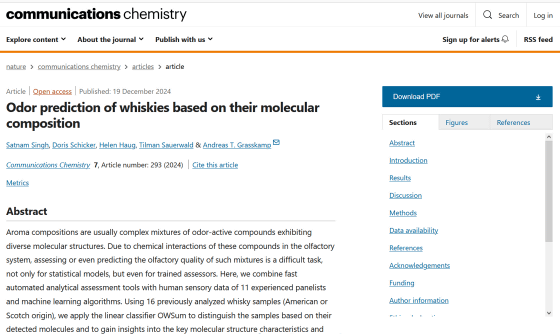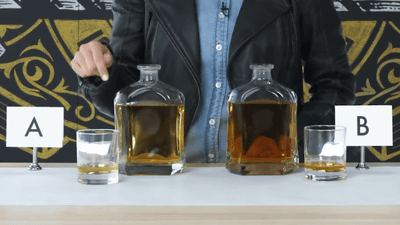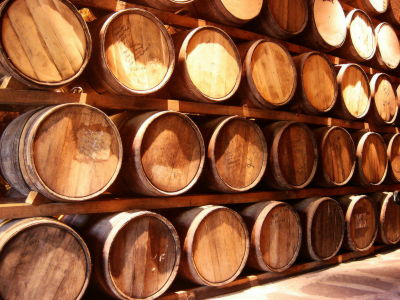AI successfully distinguishes between Scotch and American whiskey

Odor prediction of whiskies based on their molecular composition | Communications Chemistry
https://www.nature.com/articles/s42004-024-01373-2

AI beats human experts at distinguishing American whiskey from Scotch | New Scientist
https://www.newscientist.com/article/2460910-ai-beats-human-experts-at-distinguishing-american-whiskey-from-scotch/
AI learns to distinguish between aromas of US and Scottish whiskies | Artificial intelligence (AI) | The Guardian
https://www.theguardian.com/technology/2024/dec/19/ai-learns-to-distinguish-between-aromas-of-us-and-scottish-whiskies
The aroma of whiskey is complex and can be described with a variety of words (odor descriptors), such as 'orange,' 'pear,' 'lavender,' 'dark chocolate,' 'vanilla,' 'caramel,' 'almond,' 'hay,' 'peat,' etc. These are produced by a mixture of many different chemicals, and are also affected by interactions that occur in the mouth and nose.
Trained experts can properly evaluate the aroma of whiskey and evaluate its taste, but the training is difficult and there is some variation due to subjective evaluation. Therefore, the IVV research team investigated whether it is possible to train an AI algorithm to evaluate the aroma of whiskey and identify its origin.

First, the research team investigated whether Olfactory Weighted Sum (OWSum), a linear classification algorithm that predicts odor from molecules, could distinguish between nine types of Scotch whiskey and seven types of American whiskey.
In experiments, using the top five odor descriptors reported by humans from whiskey samples, OWSum was able to distinguish between Scotch and American whiskeys with approximately 94% accuracy, and when molecular data contained in the whiskey was used, the accuracy improved to 100%.
The researchers found that compounds like
In addition, when we tested whether the AI models could predict the top five odor descriptors rated by humans based on the compounds in the whiskey, they outscored human whiskey experts. Note that the tests for both AI models did not take into account the concentration of molecules, only their presence or absence.

'The great thing about AI is that it's very consistent. This consistency is also found in trained experts. We're not replacing the human nose with AI, but supporting humans through efficiency and consistency,' said Dr. Andreas Grasskamp of the research team.
Dr. William Peverer of the University of Glasgow , who was not involved in the study, argues that AI can evaluate the aroma of whiskey more reliably than humans, which could help whiskey brands maintain a consistent style. However, he pointed out that the study only included a small number of whiskeys, so it is unclear how well the AI would work in identifying more whiskeys and how it would respond to the aromas that develop with age.
Related Posts:







